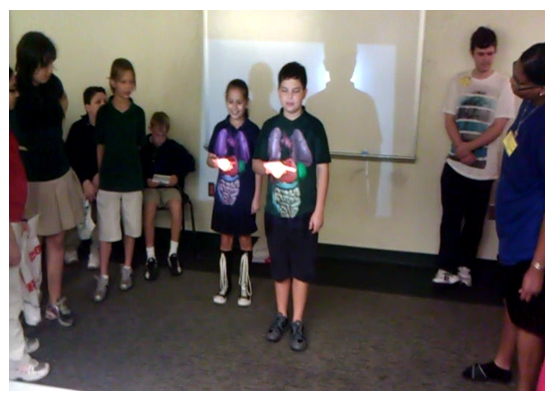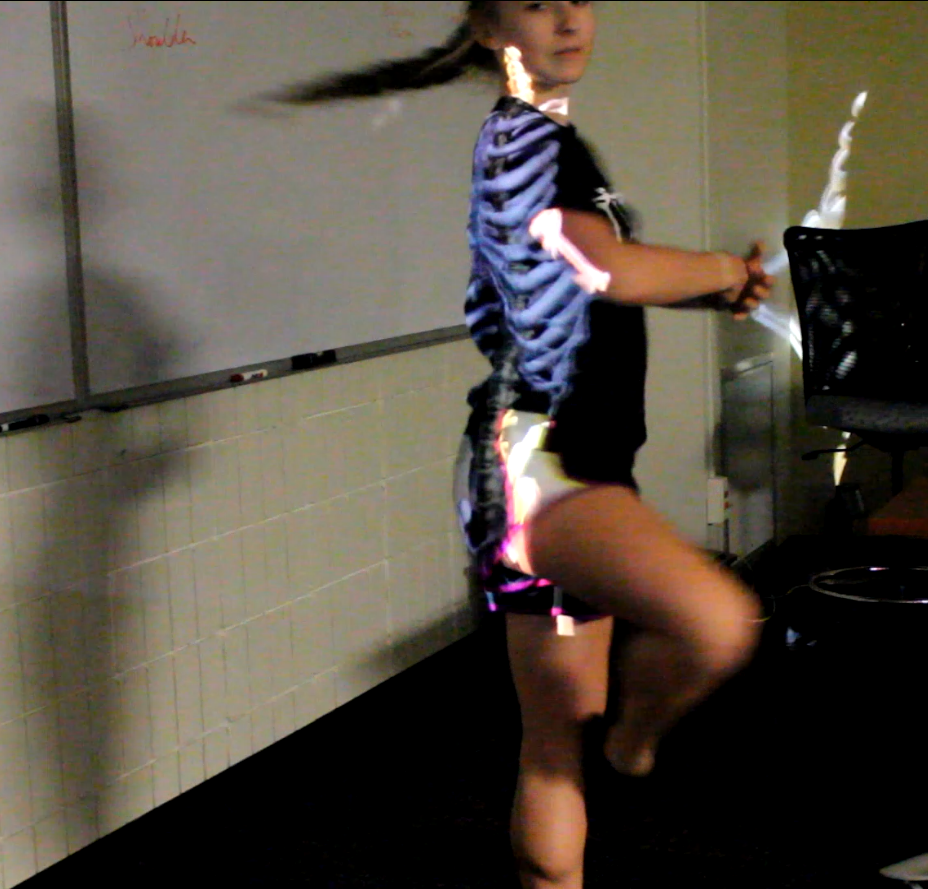|
|||||||||||||||||||||||||||||||||||
|
Spatial Augmented Reality (SAR) allows groups of users to collaborate without need for see-through screens or head-mounted displays. We take a look at natural on-person interfaces using SAR. Spatial Augmented Reality on Person (SARP) leverages self-based psychological effects such as Self-Referential Encoding (SRE) and ownership by intertwining augmented body interactions with the self. Applications based on SARP could provide powerful tools in education, health awareness, and medical visualization. The goal of this paper is to explore benefits and limitations of generating ownership and SRE using the SARP technique. We usability test an experimental Science, Technology, Engineering, and Mathematics (STEM) educational game entitled ‘Augmented Anatomy’ designed for our proposed platform with teachers and a student population in US and China. Results indicate that learning of anatomy on-self does appear correlated with increased interest in STEM and is rated more engaging, effective and fun than textbook-only teaching of anatomical structures.
Participants:
Collaborators
Publication: Supported by NSF. Any opinions, findings, and conclusions or recommendations expressed in this material are those of the author(s) and do not necessarily reflect the views of the National Science Foundation. |
||||||||||||||||||||||||||||||||||


